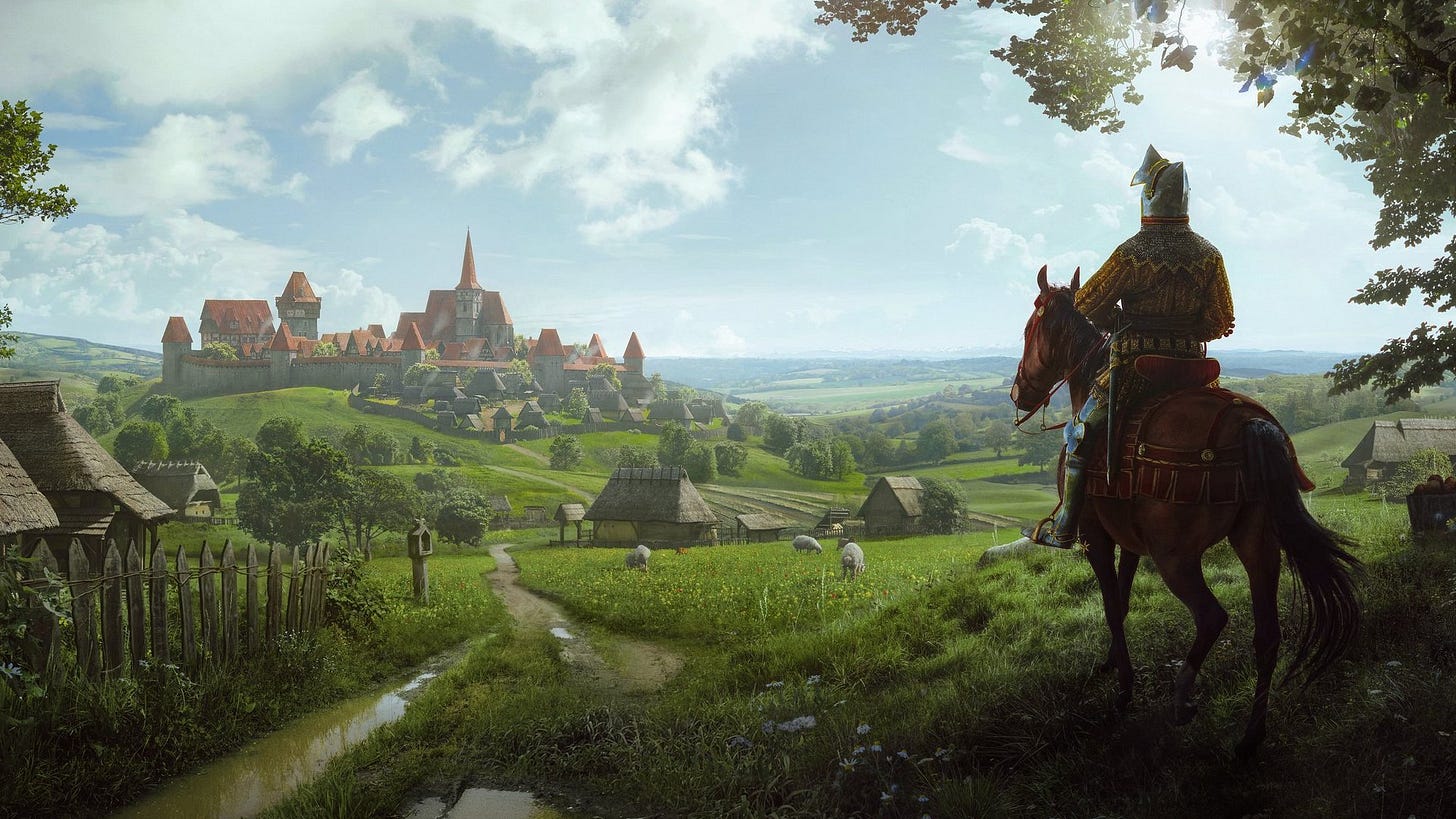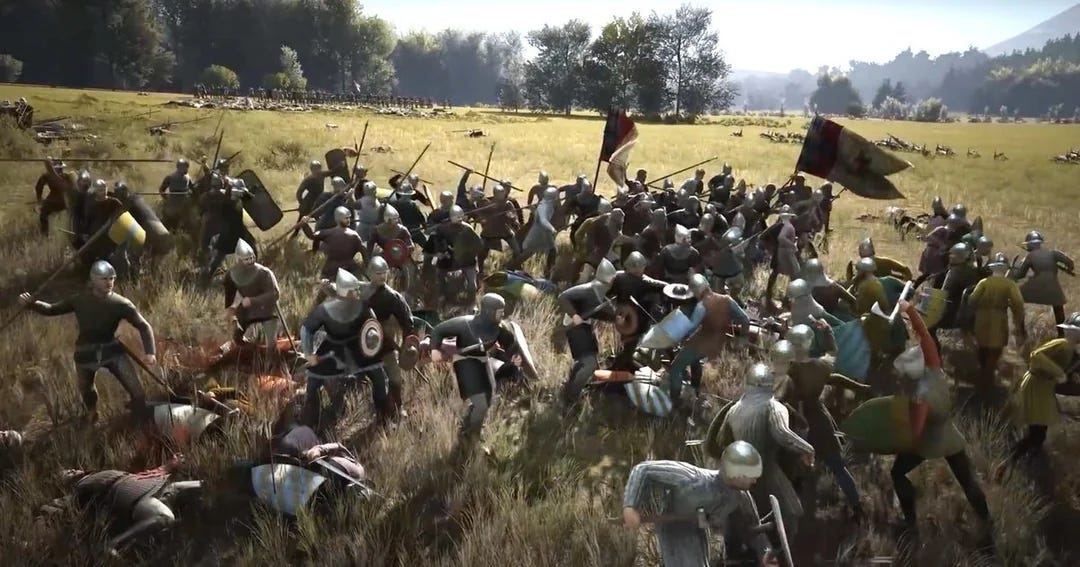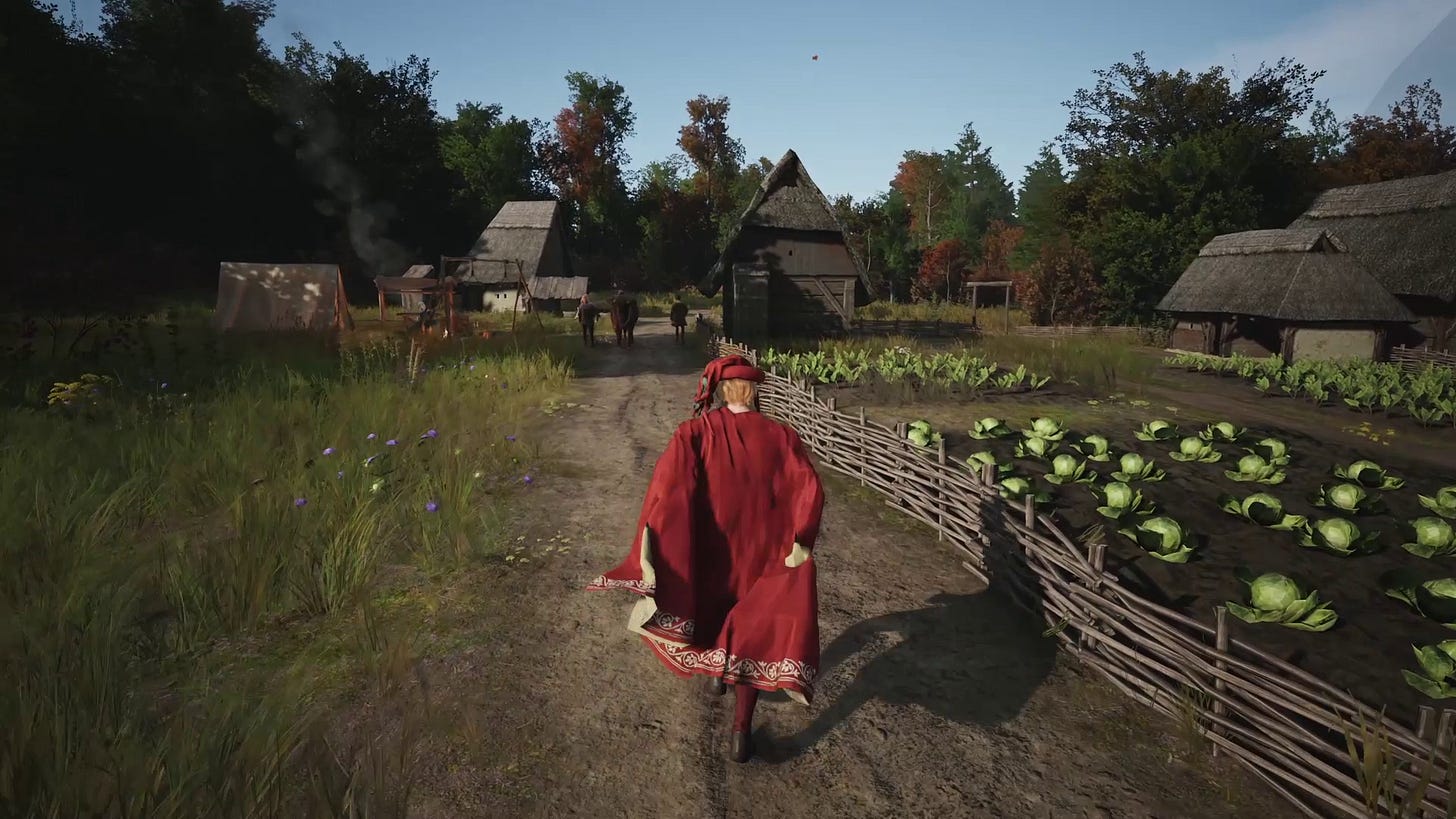When Vision Stops Scaling: The Limits of the Lone Creator
#031: Manor Lords’ latest update reveals a universal truth about creative systems: brilliance can build the vision, but only structure can sustain it.
I’ve spent dozens of hours in Manor Lords. It’s one of the most quietly ambitious games I’ve ever played as it’s a rare blend of patience, realism, and beauty that rewards attentiveness over efficiency. Every hamlet I’ve built feels alive: villagers hauling logs across muddy roads, livestock crowding the gates at dusk, the gentle rhythm of seasons shaping survival. It’s the sort of world that reminds you what design can do when it’s driven by care instead of scale.
That’s why Greg Styczeń’s recent post hit me. He’s the solo developer behind Manor Lords, and his message to the community wasn’t the usual patch note update. It was a confession about burnout, refactoring, and the painful process of turning a one-person vision into something a team could carry forward.
“Right now, on the left of my screen,” he wrote, “is a graveyard full of perks that didn’t work out.”
He talked about aligning visions with new designers, helping programmers untangle “a giant solo dev spaghetti” of code, and discovering how even “innocent tasks” became deep rabbit holes. What was once an elegant, intuitive project had become a living, breathing system that no longer responded to the same instincts that created it.
And that’s what fascinates me. Because Manor Lords isn’t just a game about managing a medieval settlement — it’s also a mirror of what happens when any creative system begins to scale.
The Leadership Paradox of Scale
Vision vs. Systemization
Greg’s update reads like a study in transition from maker to manager and from craft to coordination. The friction he describes is inevitable for anyone who’s ever built something and then tried to grow it. Systems eventually need governance. Design eventually needs process. And the hardest part of that shift isn’t the work itself but the feeling that structure might dilute the spark that made the work special in the first place.
The Loss of Momentum
His apology — “Sorry for taking so long” — also says something about our expectations. Players, investors, and audiences have been trained to equate progress with velocity. But the kind of progress that keeps systems alive — refactoring, reorganizing, laying better foundations — often looks like stasis from the outside. In reality, it’s the slow, invisible work of ensuring the world doesn’t collapse under its own weight.
The New Craft: Alignment as Design
Greg’s line about needing to “align visions” with his new team is quietly profound. Alignment is the new craft. Once systems reach a certain complexity, design becomes less about pixels or polygons and more about coherence — making sure everyone shares a mental model of what good looks like. That’s leadership as design practice.
The Myth of the Auteur
The romantic image of the lone visionary — the auteur who bends complexity to will — rarely survives contact with growth. Systems resist control. They evolve. What once felt like an expression of pure creative identity becomes a negotiation between people, processes, and priorities. The goal stops being total control and shifts toward coherence at scale.
Reflections from the Field
As someone who’s built and led design systems, I recognize the tension Greg describes. That “spaghetti codebase” has its equivalents in sprawling design libraries, legacy CMS schemas, or ad hoc workflows that worked when the team was small but buckle under scale. The instinct to start over — to “refactor the world” — is both necessary and dangerous.
What Manor Lords captures so beautifully, even in its own development, is that governance is not bureaucracy — it’s stewardship. The same patience it demands from players — planning ahead, maintaining balance, adapting to resource scarcity — is now what its creator must practice to sustain the game itself.





